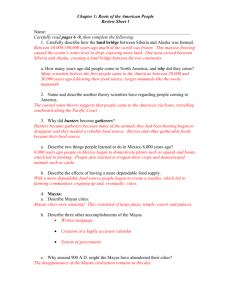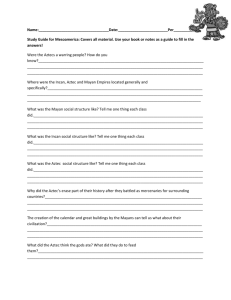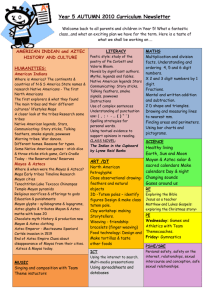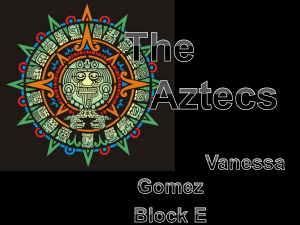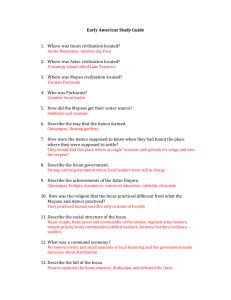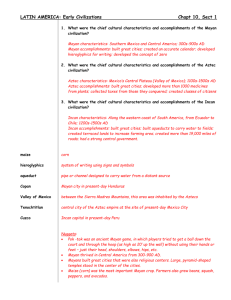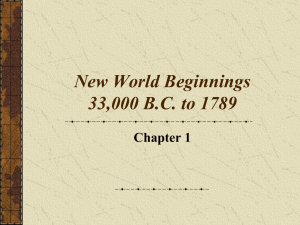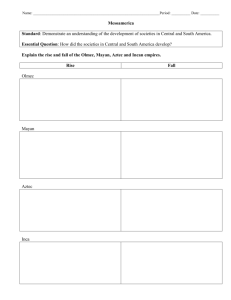Ancient Mexico—
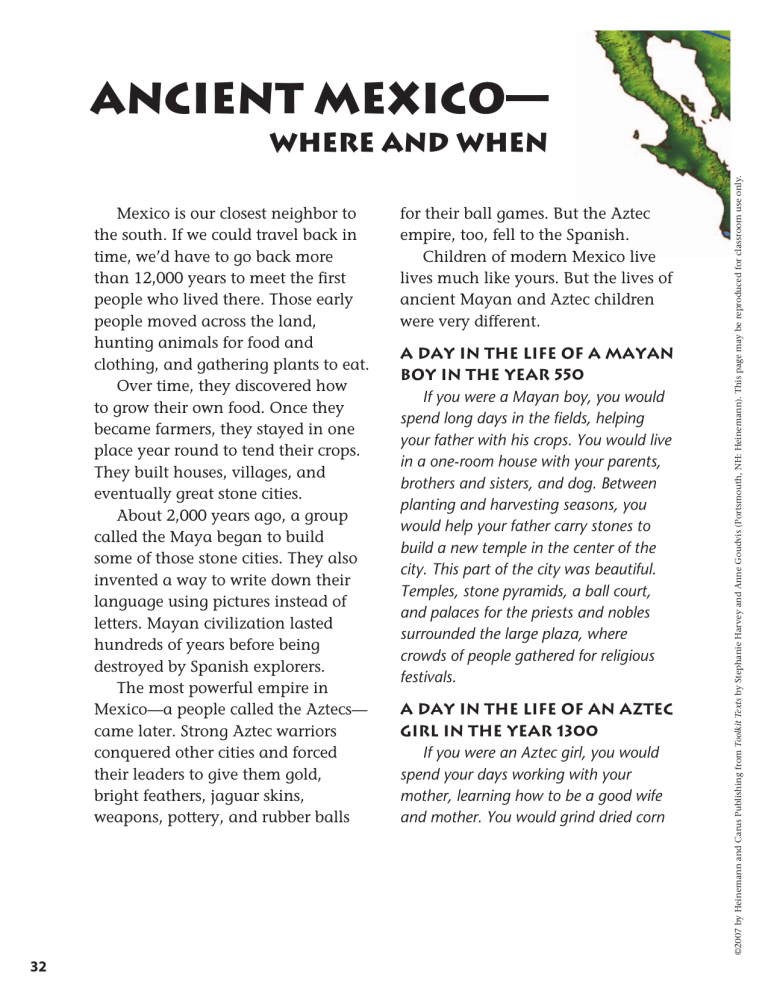
32
Ancient Mexico—
Where and When
Mexico is our closest neighbor to the south. If we could travel back in time, we’d have to go back more than 12,000 years to meet the first people who lived there. Those early people moved across the land, hunting animals for food and clothing, and gathering plants to eat.
Over time, they discovered how to grow their own food. Once they became farmers, they stayed in one place year round to tend their crops.
They built houses, villages, and eventually great stone cities.
About 2,000 years ago, a group called the Maya began to build some of those stone cities. They also invented a way to write down their language using pictures instead of letters. Mayan civilization lasted hundreds of years before being destroyed by Spanish explorers.
The most powerful empire in
Mexico—a people called the Aztecs— came later. Strong Aztec warriors conquered other cities and forced their leaders to give them gold, bright feathers, jaguar skins, weapons, pottery, and rubber balls for their ball games. But the Aztec empire, too, fell to the Spanish.
Children of modern Mexico live lives much like yours. But the lives of ancient Mayan and Aztec children were very different.
A Day in the life of A Mayan
Boy in the Year 550
If you were a Mayan boy, you would spend long days in the fields, helping your father with his crops. You would live in a one-room house with your parents, brothers and sisters, and dog. Between planting and harvesting seasons, you would help your father carry stones to build a new temple in the center of the city. This part of the city was beautiful.
Temples, stone pyramids, a ball court, and palaces for the priests and nobles surrounded the large plaza, where crowds of people gathered for religious festivals.
A Day in the Life of an Aztec
Girl in the Year 1300
If you were an Aztec girl, you would spend your days working with your mother, learning how to be a good wife and mother. You would grind dried corn
Key
Maya territory
Aztec territory
Gulf of Mexico
T
ENOCHTITLAN
YUCATAN
PENINSULA
C
HICHE
I I
N
TZA
•
P
ALENQU E
T
IKAL
Pacific Ocean kernels for the day’s supply of tortillas
(flat, round corn cakes). After you baked the tortillas on a stone grill, they were stored for the day’s meals. Your mother also taught you how to make pottery and how to use plants as medicine. She taught you how to weave cloth for the family’s clothes. Extra cloths were bundled up and taken to the market to sell or trade for other goods.
Even though the
Mayans and Aztecs lived at different times in different places, religious festivals were important in both of their lives.
The music and dancing in religious ceremonies gave them a break from their long workdays. They hoped that their hard work would please the many gods and, in return, that the gods would be good to them.
Adapted from an article by Colleen Popson
Meso means “middle.”
Mesoamerica is the land area where South America and North America meet.
33
